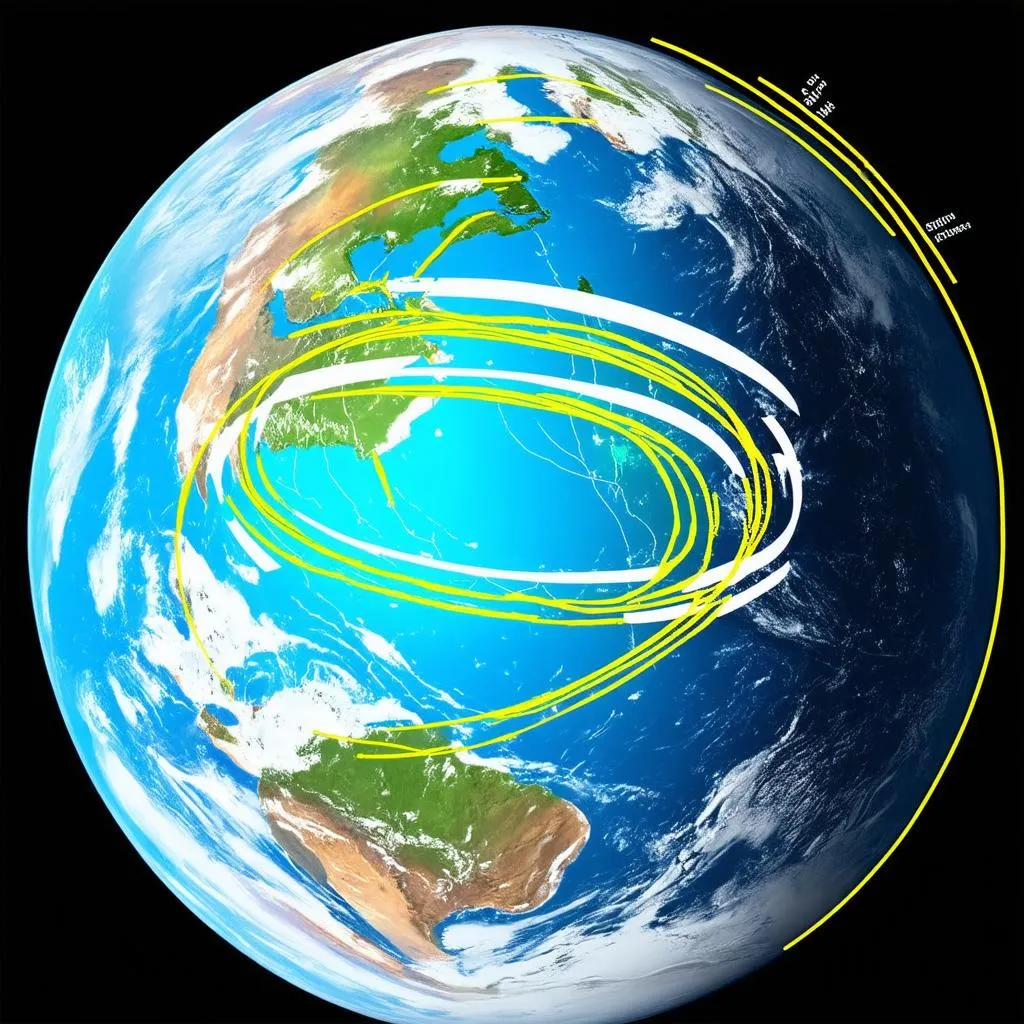Ever tuned in to a distant radio station while on a road trip and wondered, “How far can these waves actually travel?” It’s a fascinating question that takes us from the familiar hum of car radios to the mind-boggling vastness of space.
Imagine cruising down the iconic Route 66, the radio crackling with bluesy tunes as you approach Chicago. Each note, every word spoken by the DJ, is carried on the back of invisible radio waves, ripples of electromagnetic energy that can travel surprisingly far. But how far is too far? Let’s unpack this intriguing phenomenon.
The Reach of Radio Waves: It’s All About Frequency
The distance a radio wave can travel depends heavily on its frequency and the power at which it’s transmitted. Lower frequency waves, like those used in AM radio, have longer wavelengths that can diffract around obstacles like mountains and even bend along the Earth’s curvature. This is why you can sometimes pick up AM stations hundreds of miles away, especially at night.
Higher frequency waves, like those used in FM radio and television broadcasts, travel in straighter lines and have a shorter range. They’re more easily absorbed by obstacles and tend to travel line-of-sight. This is why your favorite FM station might fade out as you drive further away from the city, especially if there are hills or tall buildings in the way.
Beyond the Horizon: Bouncing Off the Ionosphere
Interestingly, radio waves can travel beyond the horizon with the help of the ionosphere. This layer of Earth’s atmosphere, located roughly 50 to 620 miles above the surface, is filled with charged particles that can reflect certain radio waves back down to Earth. This “skywave” propagation allows for long-distance communication, even across continents and oceans.
Think of it like skipping a stone across a pond. The ionosphere acts like the surface of the pond, bouncing the radio waves back down to reach receivers far beyond the horizon.
Radio Waves in Space: Whispers from the Cosmos
Radio waves aren’t confined to Earth. In fact, they’re constantly bombarding us from space. Stars, galaxies, and even black holes emit radio waves that astronomers capture using giant radio telescopes.
These cosmic radio waves have traveled billions of years, carrying valuable information about the universe’s origins and evolution. Just like ancient travelers deciphering messages carried by distant ships, astronomers use radio telescopes to listen to these cosmic whispers, unraveling the mysteries of the universe one radio wave at a time.
“Analyzing radio waves from deep space is like listening to the universe’s oldest stories,” explains Dr. Amelia Chandra, a renowned astrophysicist, in her book “Whispers from the Cosmos.” “These waves carry faint echoes of the Big Bang and offer clues about the formation of stars and galaxies.”
Feng Shui and the Flow of Energy
Interestingly, the concept of energy flow in Feng Shui has parallels with the way radio waves travel. Just as strategically placing furniture and objects in your home can improve energy flow, ensuring clear pathways for radio wave transmission is crucial for optimal reception.
Planning Your Next Road Trip? Keep Radio Waves in Mind!
While you might not be tuning into cosmic radio waves on your next road trip, understanding how radio waves travel can enhance your travel experience. If you’re planning a cross-country adventure, packing a portable radio with both AM and FM bands can ensure you have a soundtrack for your journey, no matter how remote the location.
Questions About Radio Waves and Travel:
- Can I use my cell phone in areas with weak radio reception? Cell phones use radio waves to communicate, but they operate on different frequencies than traditional radio broadcasts. Additionally, cell phone towers are strategically positioned to provide wider coverage. However, in extremely remote areas with limited cell tower infrastructure, you might experience dropped calls or weak signals.
- Do mountains affect radio wave reception? Yes, mountains and other large obstacles can block or weaken radio waves, especially higher frequency waves like those used in FM radio. This is why you might lose reception when driving through mountainous regions.
 Radio Waves and Earth
Radio Waves and Earth
 Car Radio on Road Trip
Car Radio on Road Trip
Whether you’re listening to your favorite tunes on a road trip or marveling at the vastness of the cosmos, radio waves play an integral role in our understanding of the world and beyond. So, the next time you turn on the radio, take a moment to appreciate the invisible waves carrying information and entertainment across incredible distances.
For more fascinating insights into the world around us, explore other captivating articles on TRAVELCAR.edu.vn, your trusted source for all things travel and exploration.

